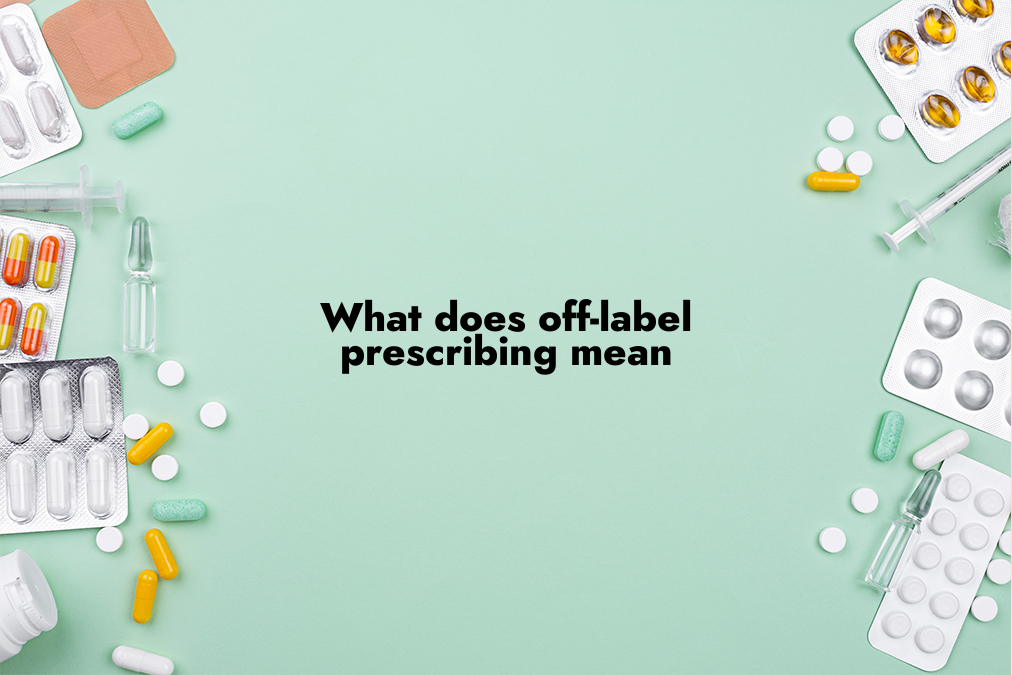In the realm of modern medicine, the term “off-label prescribing” often raises intriguing questions about the boundaries and nuances of medical practice. It’s a concept that carries both potential benefits and risks, shaping the way patients receive treatment and how physicians navigate the complex landscape of pharmaceuticals. In this article, we will delve deep into the world of off-label prescribing, exploring its definition, implications, controversies, and the crucial role it plays in modern healthcare.
Understanding Off-Label Prescribing
Defining Off-Label Prescribing
Off-label prescribing refers to the practice of using a medication for a purpose other than its originally approved and labeled use by regulatory authorities such as the Food and Drug Administration (FDA) in the United States. While the FDA rigorously evaluates drugs for specific indications before approval, physicians often discover that certain medications can be effective in treating conditions beyond their initial scope.
The Flexibility of Medicine
One of the fundamental reasons behind off-label prescribing is the ever-evolving nature of medicine. New discoveries, clinical trials, and real-world patient experiences continually shed light on the potential versatility of drugs. This flexibility allows healthcare professionals to adapt and optimize treatments for individual patients.
The Controversies Surrounding Off-Label Prescribing
The Lack of Clinical Evidence
While off-label prescribing can offer hope when no approved treatments exist, it is not without controversy. Critics argue that using medications in this manner may lack the rigorous clinical evidence that accompanies approved uses. This can raise concerns about safety and efficacy, as well as the potential for harm when unproven treatments are administered.
Legal and Ethical Dilemmas
The ethical and legal dimensions of off-label prescribing are complex. Physicians must navigate a fine line between offering the best possible care for their patients and adhering to established medical protocols. This can lead to challenging ethical dilemmas, especially when considering potential liability in cases of adverse effects.
The Patient Perspective
Exploring Patient Choice
For many patients facing serious or rare conditions, off-label prescribing can provide a glimmer of hope. It allows them access to potential treatments that may not have been explored otherwise. This can be a lifeline for those who have exhausted all conventional options.
Informed Decision-Making
Patients must actively participate in the decision-making process when it comes to off-label prescribing. Informed consent becomes paramount, ensuring that individuals understand the potential benefits, risks, and uncertainties associated with the prescribed treatment.
The Future of Off-Label Prescribing
Bridging the Knowledge Gap
As medical research and technology advance, the line between off-label and on-label prescribing may blur. Comprehensive databases and real-time monitoring could provide healthcare professionals with the latest evidence-based insights, helping them make more informed decisions.
Striking a Balance
The future of off-label prescribing lies in finding a delicate balance between innovation and safety. Stricter regulation and enhanced transparency may be necessary to safeguard patients while still allowing for the exploration of promising treatments.
Conclusion
Off-label prescribing is a multifaceted aspect of modern medicine that challenges conventional norms. It underscores the dynamic nature of healthcare, where patient needs and scientific discoveries constantly evolve. While it sparks debates and raises questions, it also offers a glimmer of hope to those who have exhausted other options.
In the ever-evolving landscape of healthcare, the practice of off-label prescribing serves as a testament to the complexity and adaptability of modern medicine. It reminds us that, sometimes, the path to healing requires thinking beyond the label and embracing the possibilities that lie in the uncharted territories of medical science.

